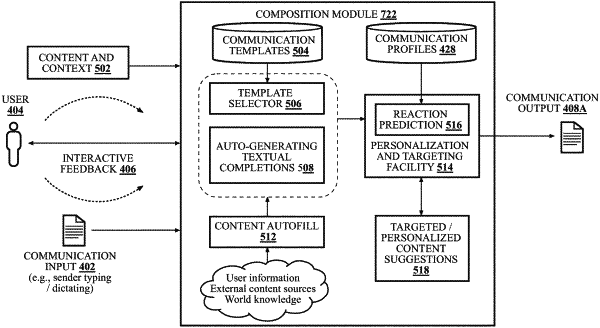| CPC H04N 7/147 (2013.01) [G06F 9/453 (2018.02); G06N 20/00 (2019.01); G10L 15/197 (2013.01); G10L 15/22 (2013.01); H04N 7/148 (2013.01)] | 23 Claims |

|
1. A method of electronic communication assistance, the method comprising:
receiving an audio-visual electronic communication at an artificial intelligence assistant computing platform from a first user, the audio-visual electronic communication comprising an audio communication content and a video communication content, an intended recipient of the audio-visual electronic communication being a second user;
extracting an audio communication information from the audio communication content;
extracting a video communication information from the video communication content;
processing the audio-visual electronic communication with a processor using at least one of a machine learning model, deep learning model, or statistical learning algorithm, to generate feedback and suggestions associated with different target audience characteristics, communication conditions, and communication channel types, for a compositional change for communication content of the audio-visual electronic communication based on the extracted audio communication information and the extracted video communication information;
providing the feedback and the suggestions to the first user.
|